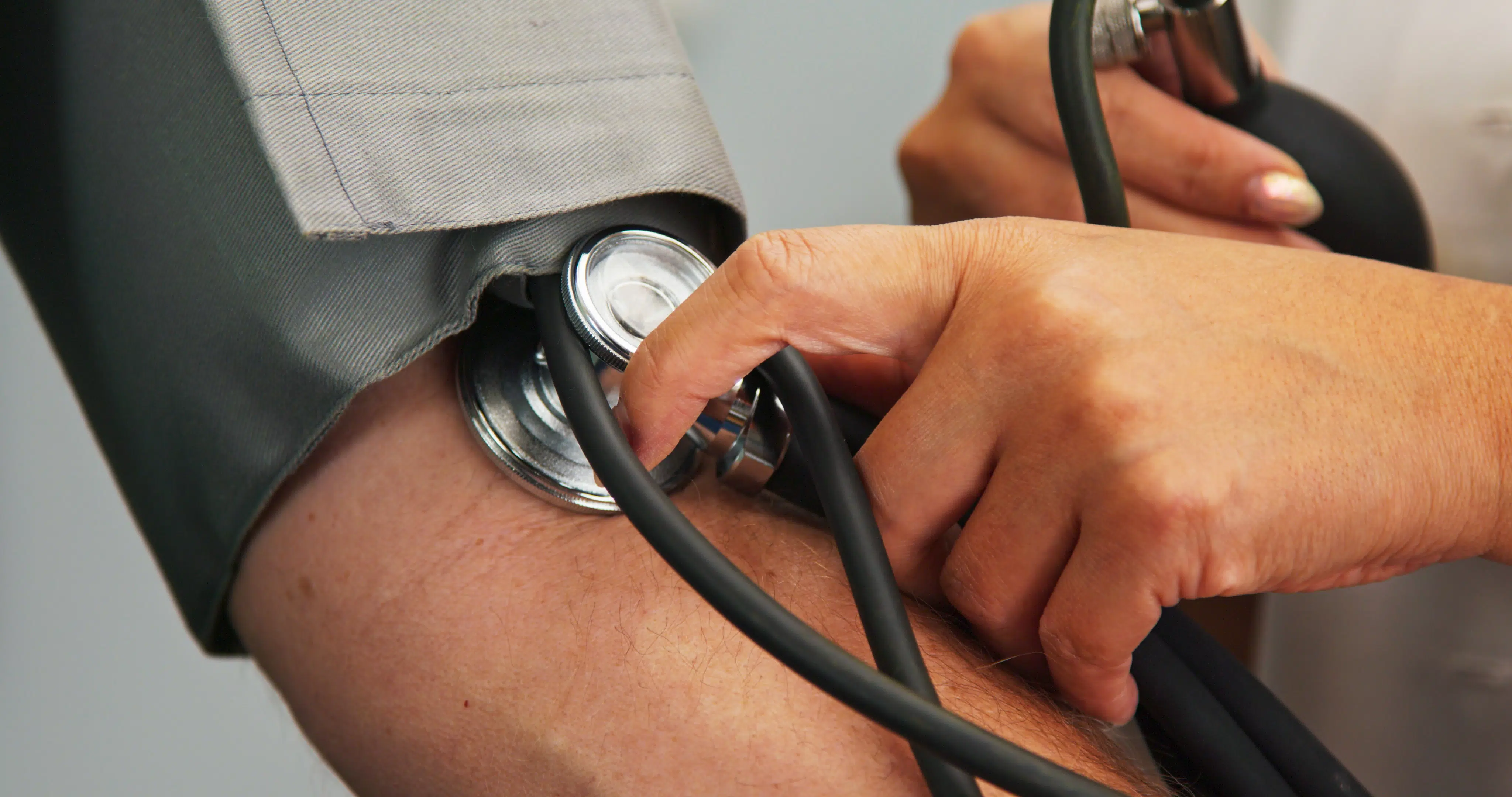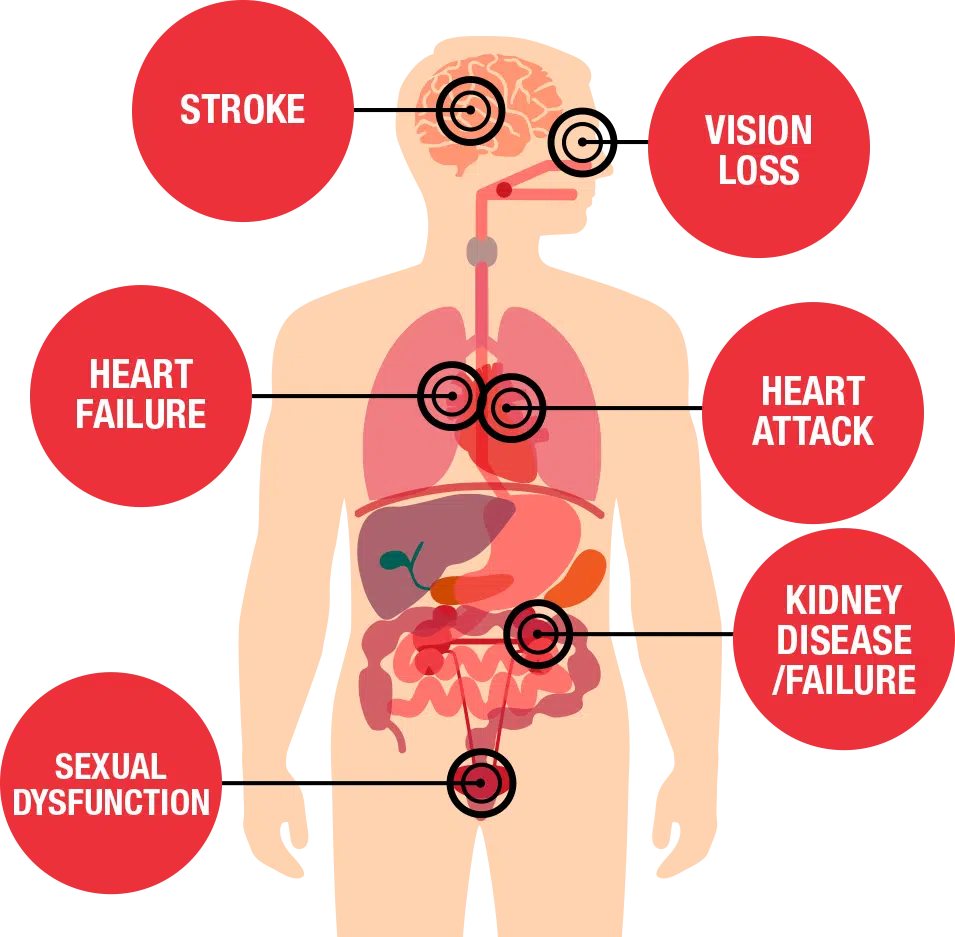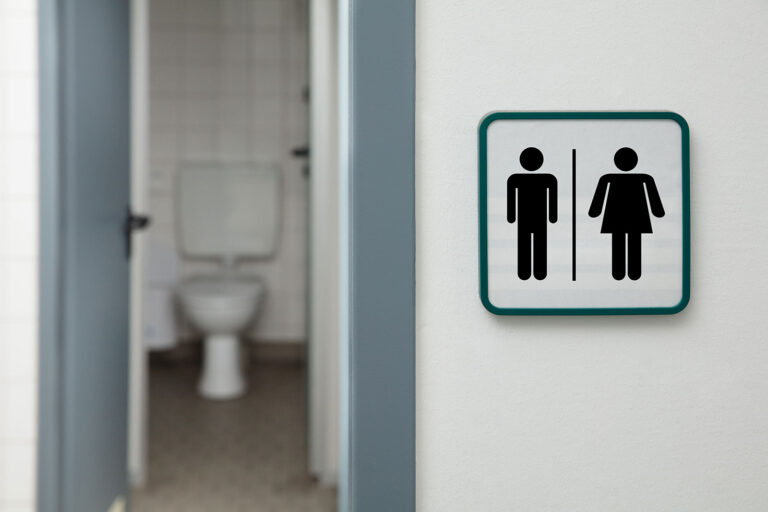High Blood Pressure
Did you know that high blood pressure is sometimes called “the silent killer?” But how can that be? There are plenty of times we can feel our blood beginning to boil, or we reach out to our healthcare team because we can tell our blood pressure is up. Let’s break down what’s going on in our bodies when our blood pressure spikes and why it can be dangerous.
Firstly, what exactly is blood pressure? And more specifically, what is high blood pressure? Blood pressure is the measurement of the pressure of blood against the walls of blood vessels as it circulates throughout the body. Per the American Heart Association, normal blood pressure is less than 120/80. When people have a pressure over this number, based on how high the number is, it is defined as being “Elevated blood pressure” or “Hypertension.”
Why are there two numbers associated with blood pressure? The first number is called the systolic blood pressure. This is the amount of pressure against the blood vessels as the heart sends blood throughout the body. The second number is called the diastolic blood pressure. This is the amount of pressure within the blood vessels as the heart relaxes in between beats. Both the systolic and diastolic blood pressure can be affected by a number of things, such as our diet, lifestyle, genetics, and existing medical conditions.
Now, let’s return to the notion of high blood pressure being called “the silent killer.” Interestingly enough, it’s actually true that we usually cannot tell when our blood pressure is high, so it’s not uncommon to be surprised that your pressure is high when checked. The pressure circulating through our vessels, whether high or low, does not generate pain regardless of the magnitude. With that said, when blood pressure gets high enough, it might negatively affect some of our organs. Whichever organ is involved will be the actual source of the pain. A common example is when high blood pressure leads to heart disease, and someone experiences pain from a heart attack. Other examples of the ways in which hypertension can negatively affect our organs are shown in the chart below.
As mentioned earlier, blood pressures higher than 120/80 are classified as either “Elevated blood pressure” or “Hypertension.” Hypertension is the more severe of the two and is diagnosed after a continued pattern of blood pressures that are over 130/80. There are two different categories of hypertension. The first is called primary hypertension, or essential hypertension. This is when the cause of the blood pressure elevation is unknown. The second category is called secondary hypertension. This is when the elevation in blood pressure is directly caused by another condition. Common causes of secondary hypertension are sleep apnea, overactive thyroid, recreational substances, and over-the-counter decongestant medications. Regardless of whether your hypertension is primary or secondary in nature, it can lead to many other conditions, such as heart disease, kidney disease, and aneurysms. This is why your healthcare team works diligently with you to identify elevated blood pressure, classify it appropriately, and then manage it via several different types of treatment. The following are all examples of how hypertension can be treated:
- Medications: There are several blood pressure lowering medications on the market that all work in different ways on the heart and the blood vessels.
- Diet: Reducing salt, red meat, saturated fats, and alcohol are all beneficial in reducing the strain on the heart as well as minimizing cholesterol buildup in the walls of the blood vessels.
- Physical Activity: Regular cardiovascular activity, such as brisk walking or running 30 minutes per day, acts to improve heart function.
- Weight Control: Staying within an appropriate range for your body stature helps to reduce the cardiovascular demand on your heart while optimizing the flow of blood throughout the body.
- Stress Control: Taking time to focus on your mental health helps to reduce the adverse effects that stress hormones have on the body.
- Tobacco Avoidance: In addition to the effects tobacco has on the lungs, tobacco also causes damage to the heart and the walls of blood vessels. Eliminating any exposure to tobacco, including secondary tobacco smoke exposure, is an important step to managing hypertension.
For more information regarding hypertension or general cardiovascular health, CareHive recommends information provided by the American Heart Association at www.heart.org.
Suneet Singh, MD, FACEP // Medical Director, CareHive // Assistant Professor of Surgery & Perioperative Care, University of Texas at Austin Dell Medical School







